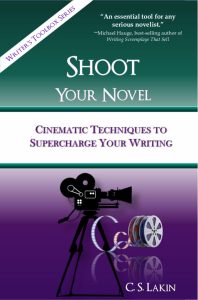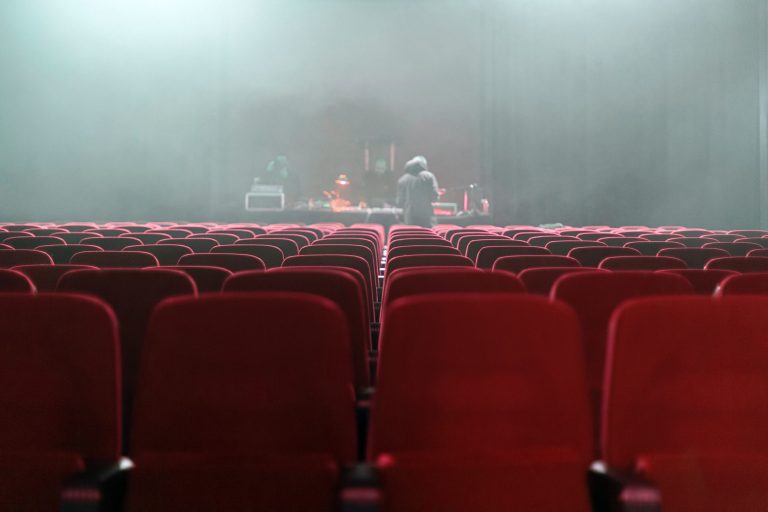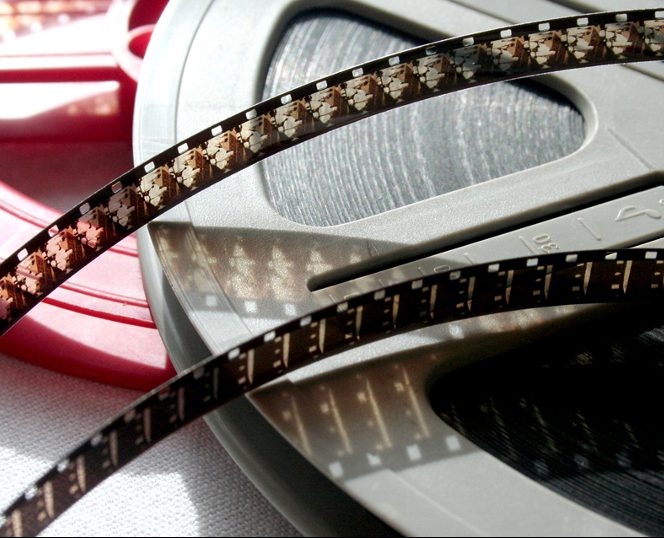Scene Structure: Cinematic Scene Openings for Novelists
For this week’s Throwback Thursday, we’re looking at excerpts from past posts on Live Write Thrive that tie in with our exploration on scene structure.
From Just Enough Sensory Detail to Set the Stage:
To set the stage for a scene, You only need a few moments to show the reader where the new scene is taking place. But rather than use dull narrative, we’ve seen how powerful it is to filter the shot through your POV character’s eyes. It’s not only great to show scenes through your character’s eyes but to use emotionally-packed descriptive words that can add power to your story. Sensory details work similarly.
A Tease before Establishing the Setting
Take a look at this Establishing Shot from the movie Jurassic Park written by Michael Crichton and directed by Steven Spielberg. Notice how Crichton uses an Extreme Close-Up to show minute detail, teasing the audience with the imagery shown in the opening moments. He then switches to a more traditional Establishing Shot to ground the locale for the start of the story.
EXTREME CLOSEUP of glowing honey-colored stones. Their shapes ABSTRACT as THE CAMERA EXAMINES air bubbles and crystalline patterns.
MOVING UP AND OVER this amber abstraction, the CAMERA FINDS unusual shapes and imperfections caught in the glassy stone: flecks of dirt, hairs, cracks. STILL MOVING. STARBURSTS OF LIGHT ricochet off the different surfaces of the stones.
CAMERA TURNS along a creamy stretch of amber. IT TURNS IN DEEPER, abstracting the picture further only to find A TINY BLUR that suddenly RACKS INTO FOCUS – a bug, a mosquito lodged within an amber tomb. It is folded on its back.
SLOW MOTION as the tip of a fine-pointed drill bores into the amber toward the trapped bug. Orange flecks fly. The mosquito trembles. The drill continues, stopping just before it touches the tiny body.
A SHINY PAIR of thin needle-nose pliers reach in the borehole and extricate the mosquito remains. These are dropped on a brightly lit glass slide. A conveyor belt starts, and the slide moves along, arriving under a long-lensed microscope.
IN MICROSCOPIC PERSPECTIVE, a thin needle pierces the bug and delicately removes a fragment of tissue.
PINCERS snare the fragment, dropping it into a narrow tube. The tube SPINS, faster and faster until it is a BLUR on the screen.
THE SCREEN FLOODS with an INFRA-RED LIGHT. Gray, oval shapes rock in a neutral mist.
WASH OUT TO:
HOT SUN overhead in a BIG SKY –
EXT BADLANDS – AFTERNOON
Lodged in the cracked earth are the partially-exposed fossilized remains of A VELOCIRAPTER, a carnivorous dinosaur. WIDEN OUT to a SWEEPING PANORAMA of a dinosaur dig, a major excavation filled with workers shoveling earth and stone, making measurements, taking photographs, scribbling notes, and conferring with each other.
The center of all this activity is one man. In a roped-off area that circumscribes the exposed bones of the raptor, is DR. ALAN GRANT, head paleontologist. Good-looking, late 30s, with a thin beard.
Grant lies on his belly, completely absorbed in a small piece of bone. A GROUP OF TWELVE STUDENTS, notebooks in hand, await his next sentence.
CLOSE ON – the tiny bone. Grant’s nose touches it.
Grant brushes the bone with a toothbrush. Then he decides on a quicker way to clean it. He licks it. Excited by his discovery, he gets to his feet and addresses his students, who listen raptly.
Notice how Crichton makes a dramatic shift from the detail of a tiny bug trapped in amber to a “sweeping panorama” of the dinosaur dig. He quickly shows just where the first true scene will unfold, then locks on to his main character for the scene: Dr. Grant. Without wasting any time, the viewer is drawn into action, with Dr. Grant finding a bone and showing it to his students. How much time is spent establishing the scene? Very little. Perhaps under a minute of screen time. But it’s enough to do just what needs to be done: establish where this scene is taking place.
Now for the Novel Version . . .
If you’ve read the novel, you may recall it doesn’t start with these scenes at all. In fact, the scene introducing the dig begins at page thirty-four, and doesn’t quite have the punch of Crichton’s screenplay (he wrote both). Take a look at the novel version:
Visitors found the badlands depressingly bleak, but when Grant looked at this landscape he saw something else entirely. This barren land was what remained of another, very different world which had vanished eighty million years ago. In his mind’s eye, Grant saw himself back in the warm, swampy bayou that formed the shoreline of a great inland sea.
Crichton goes on with a few paragraphs of backstory and exposition that may or may not be interesting to the reader, and which ends with telling he’s in northern Montana. Then we hear someone calling his name, and we get this as the true Establishing Shot:
He stood, a barrel-chested, bearded man of forty. He heard the chugging of the portable generator, and the distant clatter of the jackhammer cutting into the dense rock on the next hill. He saw the kids working around the jackhammer, moving away the big pieces of rock after checking them for fossils. At the foot of the hill, he saw six tipis of his camp, the flapping mess tent, and the trailer that served as their field laboratory. And he saw Ellie waving to him, from the shadow of the field laboratory.
From there, Ellie yells there’s a visitor, and Grant’s attention shifts to the blue truck driving over the rutted road kicking up dust as it heads toward him. He doesn’t spend pages detailing the weather—only a hint of wind flapping the tipis (although I always feel giving a bit of the weather and time of day/time of year helps fix the character more specifically in the setting) or describing how many students are digging, what they’re wearing, what the fossils look like. Crichton wants to get the reader into the action of the scene, and he knows most people will have a general feel for what an archaeological dig might look like. He leaves those details for the reader’s imagination to fill in.
A Bit of Sensory Detail Adds the Magic
What he does choose is a touch of sensory detail—sound. Just mentioning the jackhammer and the generator gives texture and implies much. A generator means they are too far from civilization to tap into local power lines. A jackhammer implies hard labor and a forceful attack on nature. Serious hard work. Important work. Six tipis means he has a good-sized crew, and they are roughing it out in the badlands. No fancy RVs here, but they’re “kids” to his protagonist, who is forty years old, which shows how his main character is seeing what’s going on around him.
Again, Crichton gives just enough detail to establish the shot through his POV character’s eyes, then moves onto what’s important—building to the high moment of the scene. If you don’t remember what that is, you can grab a copy of the novel and read it. But it will be there, as Crichton was a master at scene structure and made sure every scene had a purpose in advancing his plot.
For a deep look at how novelists can use cinematic technique, get Shoot Your Novel. No other writing craft book teaches writers how to segment their scenes the way filmmakers do, using camera shots and cinematic devices to create powerful scenes and evoke emotion.
 The most effective way to write scenes is to show, not tell, and this highly acclaimed book will give you unique tools to load your writer’s toolbox with.
The most effective way to write scenes is to show, not tell, and this highly acclaimed book will give you unique tools to load your writer’s toolbox with.
With Shoot Your Novel, Susanne Lakin does something wonderful and unique. While lots of us in the business of helping writers and storytellers recommend adding vivid images to scenes, Lakin goes much further to reveal how employing the tools and techniques of movie directing, editing and cinematography will give your fiction deeper meaning and greater emotional impact. Her book is an essential tool for any serious novelist.
—Michael Hauge, Hollywood screenwriting coach, author of Writing Screenplays That Sell
Get your print or ebook copy here!
If you’re interested in more about scene structure, be sure to subscribe to Live Write Thrive so you don’t miss the posts. Mondays we’re going deep into scene structure, and Wednesdays we’re looking at first pages of great novels to see why they work. Join us!











Your blogs – showing writers how to deepen their knowledge of the craft with practical examples helps us all to be better novelists. Thank you!